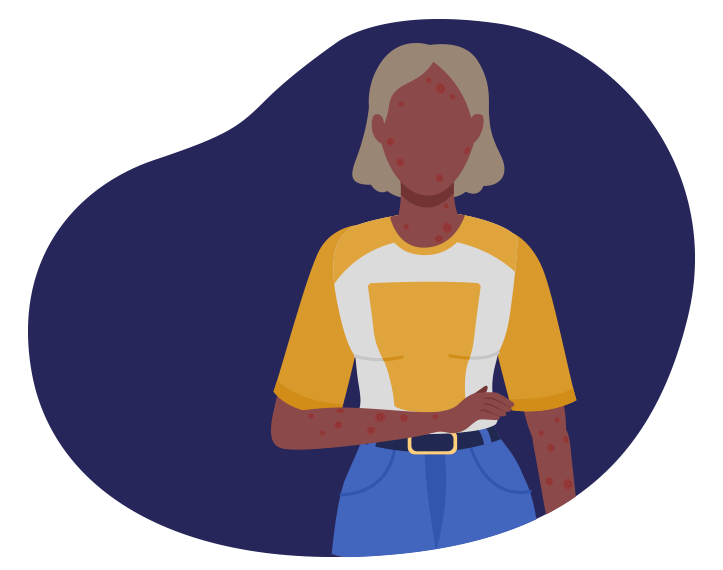
The main clinical presentation of eczema and dry skin conditions is skin becoming scratchy, dry, cracked, and irritated.
In some cases patients will have small patches of dry skin confined to a particular area of the body, but some patients may experience inflamed skin all over the body.1
On lighter skin types, inflamed skin can turn red; on darker skin types, it can turn darker brown, purple, or grey. On darker skin, this may also be harder to see.1
The majority of new eczema cases occur in children.2 Although atopic eczema can affect any region of the body, in infants, eczema usually involves the face and extensor surfaces of the limbs, and may involve the trunk. A few infants may exhibit a discoid pattern. In older children, flexural involvement predominates, as in adults.2
Eczema is characterised by episodes of remission and "flares", in which symptoms are exacerbated
This can be due to a number of factors, such as stress, sleep loss or other triggers, and require an acceleration or adaptation of treatments.3
Atopic eczema is largely genetic in nature, although the exact genetic cause has not yet been identified.4 Environmental factors vary for individual patients, but generally exposure to allergens can prompt an exacerbation of eczema.4
NEXT SECTION
Woundcare
Find out more about the role emollients play in caring for vulnerable skin.
NEXT SECTION
Follow-up and Referral
Find out more about when to follow-up and when to refer patients.
NEXT SECTION
Hydromol Range
Discover the Hydromol Range.
NEXT SECTION
Complete Emollient Therapy
Find out more about Complete Emollient Therapy
NEXT SECTION
Literature Reviews
Browse Dermatology literature reviews from 2019.
NEXT SECTION
Eczema and Dry Skin
Find out more about eczema and dry skin conditions.
NEXT SECTION
Diagnosis
Find out more about how to diagnose eczema.
NEXT SECTION
Treatment Options
Find out more about the different treatment options for eczema.
NEXT SECTION
Burden Of Itch
NEXT SECTION
Woundcare
Find out more about the role emollients play in caring for vulnerable skin.
NEXT SECTION
Follow-up and Referral
Find out more about when to follow-up and when to refer patients.
NEXT SECTION
Hydromol Range
Discover the Hydromol Range.
NEXT SECTION
Complete Emollient Therapy
Find out more about Complete Emollient Therapy
NEXT SECTION
Literature Reviews
Browse Dermatology literature reviews from 2019.
NEXT SECTION
Eczema and Dry Skin
Find out more about eczema and dry skin conditions.
NEXT SECTION
Diagnosis
Find out more about how to diagnose eczema.
NEXT SECTION
Treatment Options
Find out more about the different treatment options for eczema.
NEXT SECTION
Burden Of Itch
2. NICE Clinical Guideline CG57. Atopic eczema in children. December 2007.
3. Langan SM, Thomas KS & Williams HC. What is meant by a “flare” in atopic dermatitis? Arch Dermatol 2006;142:1190-1196
4. Clinical Knowledge Summaries, Eczema – atopic. http://cks.nice.org.uk/eczema-atopic#!diagnosissub. Last accessed April 2023.